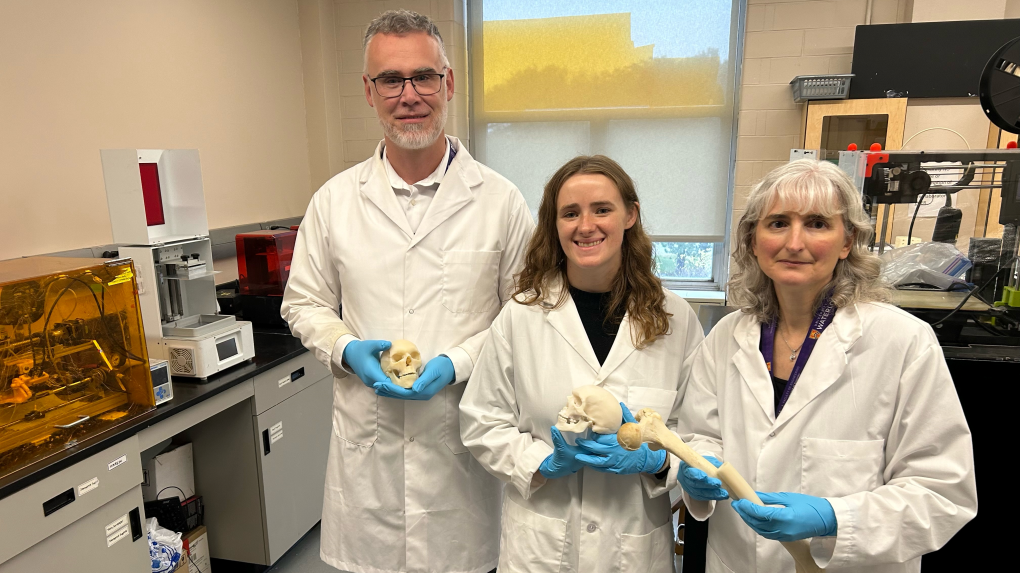Artificial bone that primarily dissolves as actual bone grows.
It’s an thought that would dramatically enhance the standard of life for most cancers and trauma sufferers, and due to a crew on the College of Waterloo, it may quickly be a actuality.
Thomas Willett, an affiliate professor of biomedical engineering at UW, acquired the concept whereas working at Mount Sinai Hospital in Toronto.
“I worked with orthopedic surgeons there, and I became exposed to this problem of large defects that don’t heal by themselves,” he mentioned.
A easy bone break can mend itself, however for bone most cancers or trauma sufferers who’re in want of a complete new bone or bone graft, it is extra difficult.
Which is why Willett and his crew have developed a really particular substance that may be 3D-printed to satisfy particular wants.
“One advantage is that our material doesn’t contain any cellular material, so we’re not going to have a rejection, like you would have with an organ,” Willet defined.
Elizabeth Diederichs pouring the uncooked materials into the 3D printer on the College of Waterloo. (Krista Sharpe/ Ontario Chronicle)
His colleague on the venture, one other professor of biomedical engineering on the College of Waterloo, mentioned that additionally means fewer surgical procedures.
“It’s going to likely help improve quality in life and also reduce health care costs,” mentioned Maud Gorbet. “If you think, in the long run, how much it costs.”
The substance has the consistency of pancake batter.
 A 3D-printed cranium, made with artificial supplies, on the College of Waterloo. (Krista Sharpe/ Ontario Chronicle)
A 3D-printed cranium, made with artificial supplies, on the College of Waterloo. (Krista Sharpe/ Ontario Chronicle)
Elizabeth Diederichs is a graduate scholar and dealing on venture as a part of her PhD.
“We are working with a biopolymer, nanocomposite. So it’s basically polymers from sources such as soybean oil, and then hydroxyapatite, which is the mineral, that’s actually in your bones currently,” she mentioned.
As soon as positioned in an individual, the concept is that the 3D printed bone would ultimately dissolve because the physique grows pure bone to interchange it.
It is taken about half a decade to develop the model of the fabric they now use which, in some circumstances, could have to be sturdy sufficient to resist the burden of the human physique.
 Thomas Willett, Elizabeth Diederichs and Maud Gorbet maintain bones and skulls which were 3D printed with artificial supplies. (Krista Sharpe/ Ontario Chronicle)
Thomas Willett, Elizabeth Diederichs and Maud Gorbet maintain bones and skulls which were 3D printed with artificial supplies. (Krista Sharpe/ Ontario Chronicle)
For now, the crew is just printing small variations of bones and skulls, to check the substance.
The plan, although, is to scale up the venture.
“This technology is fairly new, so as its building, we’re getting more and more capabilities of what we can do with it,” Diederichs added.
Willett mentioned it’s going to doubtless take no less than a decade and thousands and thousands of {dollars} earlier than the substance is prepared for hospitals.
However, for now, the crew is working in the direction of scientific trials and securing extra funding.








